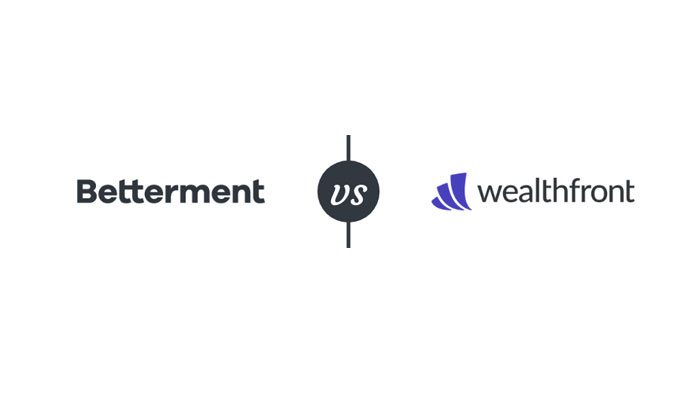Robo-Advising Apps
A new era of low-maintenance money management has arrived, thanks to the exploding popularity of robo-investing.
Are you excited by dividend reinvestment? Is management expense ratio comparison one of your hobbies? If the answer is no (or I don’t know what you’re talking about), then robo- investing is for you.
Robo-advising apps automate investor discipline and can help you reach your financial goals faster. They offer curated portfolios that are optimized for your own investing timeline and risk preferences. Robo-advisors can also automate regular portfolio maintenance such as automated asset purchasing, dividend reinvestment, and tax loss harvesting.
Finally, you can access professional investing help without getting squeezed. H2> Comparing Betterment vs Wealthsimple
We’ve been asked by readers to compare Betterment vs Wealthsimple—two today’s the biggest names in digital investing. Read our breakdown of management fees, account types and service levels below to find out which brokerage is best for you.
Betterment vs Wealthsimple: Fees
Since you’re reading this, you clearly care about your pocketbook. Brokerage fees can be the rock in your shoe throughout your investing journey. Luckily, both Betterment and Wealthsimple offer low fees without sacrificing the frills.
Betterment Fees
To access Betterment’s robo-advisors and trading platform, you’ll be charged 0.25% on invested assets. Anyone can invest into Betterment’s wide array of account types with a $0 minimum account balance.
Betterment also offers a deluxe service featuring unfettered access to CFP professionals for 0.40% yearly. Top-tier pricing includes all the robo-advisor features Betterment has to offer along with tailored service from real people.
Top-tier pricing is limited to accounts of $100,000 or more but remains considerably less expensive than non-robo advising alternatives.
Wealthsimple Fees
Wealthsimple “Basic” pricing begins at 0.5% on invested assets for any account size less than $100,000. The Basic plan provides a standard suite of robo-advising features like auto-reinvestment and rebalancing.
For accounts above $100,000, Wealthsimple clients gain access to Black pricing, touting 0.4% management fees. Tax-loss harvesting is added at the Black pricing level, in addition to some modest service level improvements.
Finally, Wealthsimple clients with accounts of $500,000 or more gain access to full- service Generation pricing. Generation clients gain access to a dedicated team of financial planners and advisors.
If you’re wondering why Wealthsimple charges 2x for the same services as Betterment, you’re not alone. For the many investors simply seeking automated investing, Betterment’s low-tier pricing structure offers most of the features you’ll need at a palatable price.
Betterment vs Wealthsimple Account Types
Today’s brokerages offer a mindboggling array of services. Trading platforms, daily banking, and tax-advantaged accounts are all now rolled into one shop.
Comparing Betterment vs Wealthsimple, who offers the most comprehensive service? We break this down below.
| Betterment Account Types | Wealthsimple Account Types |
|
|
As you can see, Betterment offers a greater selection of account types. Some of the accounts, such as High-Yield Cash reserves, are accessible in lower account tiers at Betterment vs Wealthsimple.
It’s important to note that Betterment does not support self-directed investing. If you ever want to make your own picks, you’ll need to look outside of the Betterment ecosystem. For self- directed investing, check out modestmoney.com’s comparisons of Betterment vs Robinhood, Fidelity, and E-trade.
Betterment vs Wealthsimple: Customer Service
Your investment advisor may be a robot, but don’t forget that customer service is handled by humans. Read on to see how customer service stacks up at Betterment vs Wealthsimple.
Betterment Customer Service
Betterment’s lowest price tier offers no human customer service beyond basic technical support. However, $199 buys you a meeting with a financial advisor regardless of your tier.
To access full-service advising, you’ll need to reach Betterment’s premium tier. In this tier, you’ll have unlimited calls with a Betterment CFP and dedicated team of financial advisors. Don’t forget, the premium tier costs an additional 0.15% management fee and requires a $100,000 account size.
Wealthsimple Customer Service
Wealthsimple’s Basic plan is also fully automated in terms of advising and support. However, Basic plan clients do receive a complimentary Portfolio review to discuss goals, fees, and taxes.
Wealthsimple’s Black plan is similarly limited in human support. A financial planning review session is included at this tier but remains a far cry from tailored service.
To unlock truly meaningful customer service, Wealthsimple clients must subscribe to the Generation tier. In other words, don’t expect premium customer service from Wealthsimple until you have a half-million invested.
Betterment vs Wealthsimple: We Pick Betterment.
Betterment is a clear winner in terms of pricing and service. Betterment manages to provide the same features and better customer service at half the yearly cost of Wealthsimple. While Wealthsimple only offers real service to high-worth clients, Betterment provides value out of the gate with $0 account minimums and 0.25% management fees.
Don’t be fooled by Wealthsimple’s slick branding, flashy ads and Halal investing. Betterment offers the best value to clients by far. But before you decide, check out modestmoney.com’s in- depth reviews on Betterment here and Wealthsimple here.
Related Betterment Comparison Posts:
- Betterment vs Wealthfront
- Betterment vs Acorns
- Betterment vs Vanguard
- Betterment vs Fidelity
- Betterment vs Robinhood
- M1 Finance vs Betterment
- Betterment vs Sofi
- Betterment vs Stash
- Betterment vs Charles Schwab
- Betterment vs Personal Capital
- Betterment vs Ellevest
- Betterment vs ETrade
- Betterment vs Wealthsimple



































